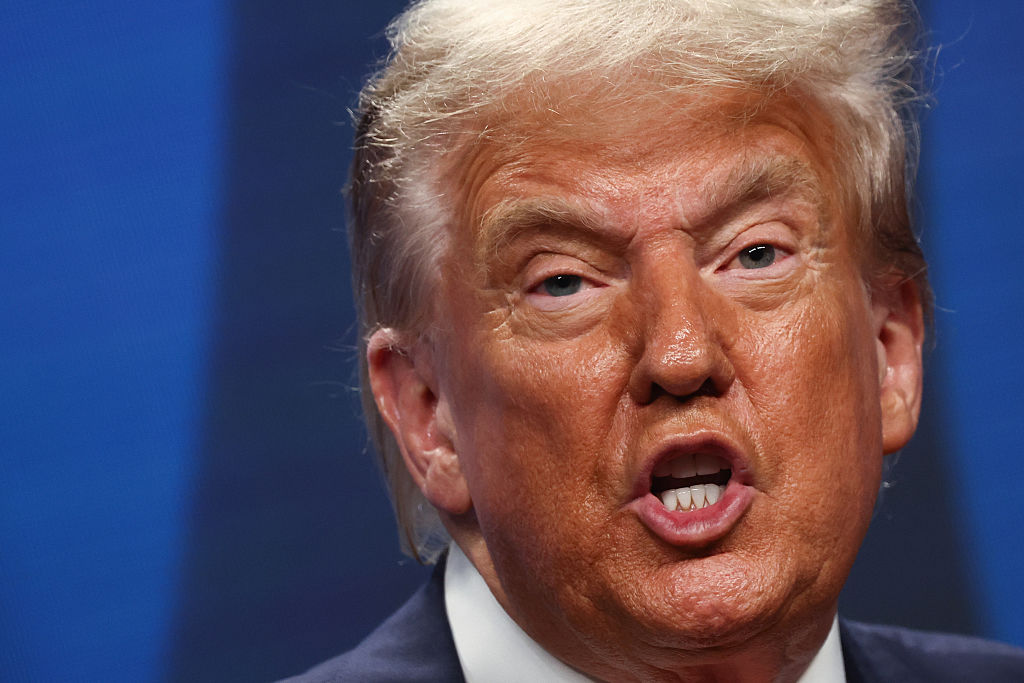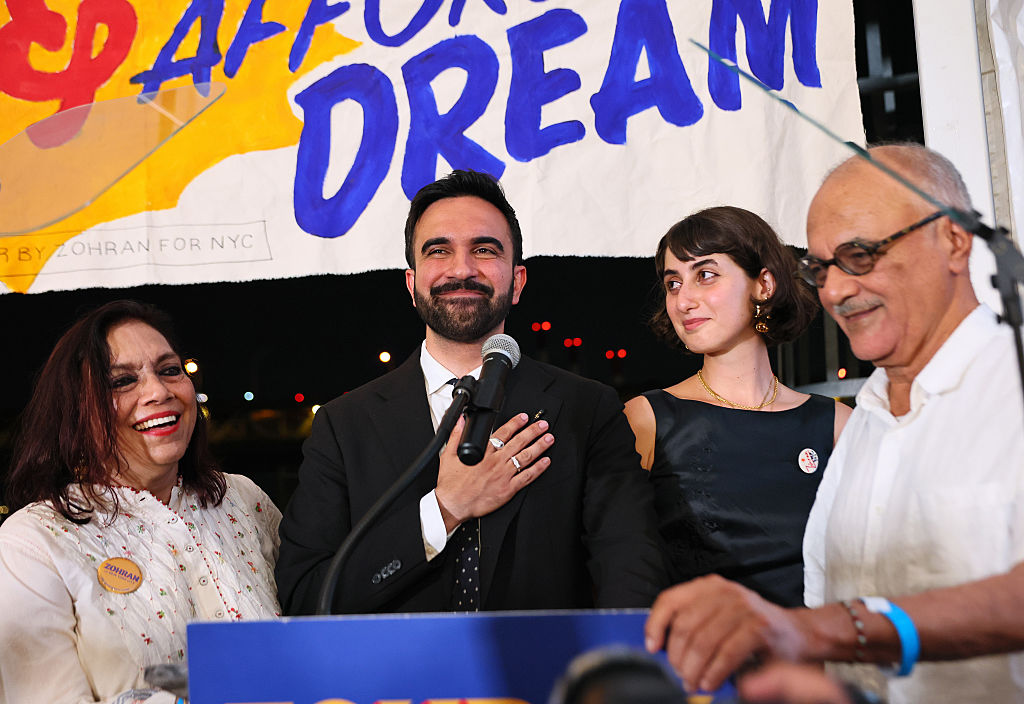Trayvon Martin, Black Male Code
Trayvon Martin And The Black Male Code
PHILADELPHIA — I thought my son would be much older before I had to tell him about the Black Male Code. He’s only 12, still sleeping with stuffed animals, still afraid of the dark. But after the Trayvon Martin tragedy, I needed to explain to my child that soon people might be afraid of him.
SEE ALSO: NewsOne’s Trayvon Martin Coverage
We were in the car on the way to school when a story about Martin came on the radio. “The guy who killed him should get arrested. The dead guy was unarmed!” my son said after hearing that neighborhood watch captain George Zimmerman had claimed self-defense in the shooting in Sanford, Fla.
‘LIKE’ NewsOne’s FB Page To Stay Up On Black News From Around The World
We listened to the rest of the story, describing how Zimmerman had spotted Martin, who was 17, walking home from the store on a rainy night, the hood of his sweatshirt pulled over his head. When it was over, I turned off the radio and told my son about the rules he needs to follow to avoid becoming another Trayvon Martin – a black male who Zimmerman assumed was “suspicious” and “up to no good.”
As I explained it, the Code goes like this:
Always pay close attention to your surroundings, son, especially if you are in an affluent neighborhood where black folks are few. Understand that even though you are not a criminal, some people might assume you are, especially if you are wearing certain clothes.
Never argue with police, but protect your dignity and take pride in humility. When confronted by someone with a badge or a gun, do not flee, fight, or put your hands anywhere other than up.
Please don’t assume, son, that all white people view you as a threat. America is better than that. Suspicion and bitterness can imprison you. But as a black male, you must go above and beyond to show strangers what type of person you really are.
I was far from alone in laying out these instructions. Across the country this week, parents were talking to their children, especially their black sons, about the Code. It’s a talk the black community has passed down for generations, an evolving oral tradition from the days when an errant remark could easily cost black people their job, their freedom, or sometimes their life.
After Trayvon Martin was killed, Al Dotson Jr., a lawyer in Miami and chairman of the 100 Black Men of America organization, told his 14-year-old son that he should always be aware of his surroundings, and of the fact that people might view him differently “because he’s blessed to be an African-American.”
“It requires a sixth sense that not everyone needs to have,” Dotson said.
Dotson, 51, remembers receiving his own instructions as a youth, and hearing those instructions evolve over time.
His grandparents told Dotson that when dealing with authority figures, make it clear you are no threat at all – an attitude verging on submissive. Later, Dotson’s parents told him to respond with respect and not be combative.
Today, Dotson tells his children that they should always be respectful, but should not tolerate being disrespected – which would have been recklessly bold in his grandparents’ era.
Yet Dotson still has fears about the safety of his children, “about them understanding who they are and where they are, and how to respond to the environment they are in.”
Bill Stephney, a media executive who lives in a New Jersey suburb that is mostly white and Asian, has two sons, ages 18 and 13. The Martin killing was an opportunity for him to repeat a longtime lesson: Black men can get singled out, “so please conduct yourself accordingly.”
Like Dotson, Stephney mentioned an ultra-awareness – “a racial Spidey sense, a tingling” – that his sons should heed when stereotyping might place them in danger.
One night in the early 1980s, while a student at Adelphi University on Long Island, Stephney and about a dozen other hip-hop aficionados went to White Castle after their late-night DJ gig. They were gathered in the parking lot, eating and talking, when a squadron of police cars swooped in and a helicopter rumbled overhead.
“We got a report that a riot was going on,” police told them.
Stephney and his crew used to talk late into the night about how black men in New York were besieged by violence – graffiti artist Michael Stewart’s death after a rough arrest in 1983; Bernhard Goetz shooting four young black men who allegedly tried to mug him on the subway in 1984; Michael Griffith killed by a car while being chased by a white mob in 1986; the crack epidemic that rained black-on-black violence on the city. They felt under attack, as if society considered them the enemy.
This is how the legendary rap group Public Enemy was born. Their logo: A young black man in the crosshairs of a gun sight.
“Fast forward 25 years later,” Stephney said. “We’ve come a long way to get nowhere.”
But what about that long road traveled, which took a black man all the way to the White House? I can hear some of my white friends now: What evidence is there that Trayvon Martin caught George Zimmerman’s attention – and his bullet – because of his race? Lynching is a relic of the past, so why are you teaching your son to be so paranoid?
There is a difference between paranoia and protection. Much evidence shows that black males face unique risks: Psychological studies indicate they are often perceived as threatening; here in Philadelphia, police stop-and-frisk tactics overwhelmingly target African-Americans, according to a lawsuit settled by the city; research suggests that people are more likely to believe a poorly seen object is a gun if it’s held by a black person.
Yes, it was way back in 1955 when 14-year-old Emmitt Till was murdered in Mississippi for flirting with a white woman. But it was last Wednesday when a white Mississippi teenager pleaded guilty to murder for seeking out a black victim, coming across a man named James Craig Anderson, and running him over with his pickup truck.
Faced with this information, I’m doing what any responsible parent would do: Teaching my son how to protect himself.
Still, it requires a delicate balance. Steve Bumbaugh, a foundation director in Los Angeles, encourages his 8- and 5-year-old sons to talk to police officers, “and to otherwise develop a good relationship with the people and institutions that have the potential to give them trouble. I think this is the best defense.”
“I don’t want them to actually think that they are viewed suspiciously or treated differently,” Bumbaugh said. “I think that realization breeds resentment and anger. And that can contribute to dangerous situations.”
His sons are large for their age, however.
“I’m probably naive to think that they won’t realize they’re viewed differently when they’re 6-4 and 200 pounds,” Bumbaugh said, “but I’m going to try anyway.”
I am 6-4 and more than 200 pounds, son. You probably will be too. Depending on how we dress, act and speak, people might make negative assumptions about us. That doesn’t mean they must be racist; it means they must be human.
Let me tell you a story, son, about a time when I forgot about the Black Male Code.
One morning I left our car at the shop for repairs. I was walking home through our quiet suburban neighborhood, in a cold drizzle, wearing an all-black sweatsuit with the hood pulled over my head.
From two blocks away, I saw your mother pull out of our driveway and roll towards me. When she stopped next to me and rolled down the window, her brown face was full of laughter.
“When I saw you from up the street,” your mother told me, “I said to myself, what is that guy doing in our neighborhood?”
SEE ALSO:















